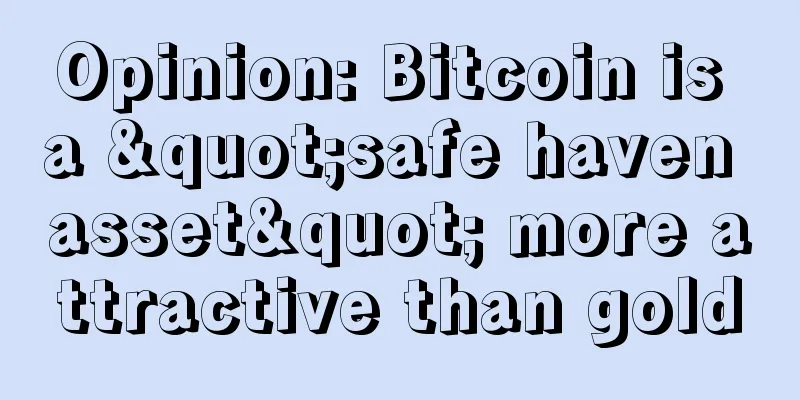Analyzing crypto market trends from macro cycles and cryptocurrency interest rates

|
1/ This series of tweets wants to talk about the issue of macro cycles and cryptocurrency interest rates. Cryptocurrency interest rates are set by the market and self-correct, supporting an anti-fragile digital economy. In contrast, centralized interest rates create an extremely sensitive system that is drowning in debt. 2/ Cryptocurrency interest rates will eventually approach the staking rates of top-level layer 1 (L1) blockchains. I will use the mechanism behind ETH staking as a reference (after the EIP-1559 proposal takes effect and the merger is completed). The ETH staking rate comes from two parts:
3/ First, the block reward will be a stable part of the staking rate, and the staking rate guarantees the base rate/interest rate floor. It is important to have this foundation in place to protect the network and provide the lowest interest rates to lenders at all times. 4/ Second, economic activity (fees) on the network will be the variable component of the staking rate. This variable rate would cool down the system’s expansion when the system is “overheated” and make the network more attractive when network activity is low. As shown in the figure: 5/ Currently we believe that cryptocurrency interest rates are leveraged. But as the market matures and establishes a cryptocurrency-native yield curve, this credit will be effectively used to drive economic expansion. 6/ Now, I will use the US financial system as an example to contrast free market crypto interest rates with the current US system. I can’t resist talking about why I believe we are still firmly in a crypto bull market — the answer can be found in the following macro backdrop: 7/ The Fed has kept interest rates close to zero since 2008. Since interest rates are completely disconnected from the real economy, they support old debt while massively incentivizing new debt, creating a vicious cycle because loans are essentially “free.” 8/ Despite the interest rate being only 0.25%, the US M2 money supply has been increasing at 7-8% per year, causing massive distortions in the entire market. Anyone holding cash or sovereign bonds is effectively losing money, but taking on debt is rewarded because of this cheap credit - a backward system. 9/ We have already seen a surge in corporate and government debt as a result of these incentives. There has been massive malinvestment and inefficient use of capital, companies are indulging in record buybacks, and the U.S. government deficit is approaching its highest level since World War II. 10/ The Fed is now in a bind and unable to raise interest rates due to the heavy debt burden. The US government's tax revenue is currently lower than its pay-as-you-go portion, which means it issues bonds (prints money) just to pay off its debt. 11/ This situation makes the US economy extremely vulnerable. If such a huge debt burden causes a recession, it will further slow tax revenues and corporate cash flow. The problems within the US government and the number of "zombie" companies will be magnified. The economy will then fall into deflationary stagnation. 12/ Since the COVID-19 pandemic, the Fed’s balance sheet has grown significantly. The Fed indirectly purchases U.S. government debt through quantitative easing. The U.S. government has effectively allowed the Federal Reserve to finance its spending, buying more than 50% of U.S. Treasury bonds issued since the start of the coronavirus pandemic. 13/ The last time the US government debt/GDP ratio reached such a serious bad debt level (130%) was at the end of World War II, when the US Treasury yield curve was capped at 0.5-2.5%. Inflation was raging at the time and bond/cash holders were actually losing money (real interest rates were -10%). In this way, the US government reduced the real value of its debt. 14/ The US is in trouble and needs to reduce its debt/GDP ratio from 130% to around 60-70%. This will require huge "nominal GDP growth" fueled by inflation. We are seeing this with the surge in commodity prices and the massive fiscal stimulus package in the United States. 15/ US government spending accounts for more than 20% of US GDP, but it still seems insufficient to stabilize the situation. All this shows how fragile the U.S. economy is. The root cause is the huge misalignment between interest rates, money supply and the real cost of capital over the past 60 years. 16/ Ultimately, the Fed + the US government will do whatever it takes to prevent a recession. In the late stages of the debt cycle, any stress could be the final straw that breaks the camel's back. Inflation is the only way to deleverage. The US government will repeat their post-WWII playbook and bring negative real interest rates. 17/ These macro trends are definitely good news for BTC and ETH. When inflation comes, we will see billions of dollars flow into BTC and ETH. Since assets like bonds and cash will actually shrink in value in the face of inflation, a large amount of funds will be looking for new investment targets. The emphasis on value storage in the value narrative of cryptocurrencies will allow cryptocurrencies to receive a large amount of funds. 18/ While this economic picture sounds bleak, I am optimistic about a digital economy built on sound money and market-set interest rates. The decentralized nature of this digital economy and its sound monetary foundation will provide a solid foundation for capital and strongly support the productive use of funds. 19/ Brief summary: The Federal Reserve and the US government are already in trouble and must deleverage the economy by turning on the printing press, which equals a bull market for BTC and ETH. The staking rate will become the interest rate on the cryptocurrency; promoting sound money and monetary policy that cannot be distorted. 20/ I hope you will gain something from this article. |
<<: Texas government signs law creating legal framework for cryptocurrency investments
Recommend
'Can't stop it, can't stop it': Bitcoin holders buy the dip at $20,000
The idea that panic selling is driving bitcoin’s ...
Analysis of the facial features of women who are prone to remarriage
The so-called second marriage face is a face that ...
What are the signs of a short life? People with upturned nostrils
We all say that we hope we can live a long life, ...
Face reading: vertical lines on the forehead
It is normal to have vertical lines between the e...
No Longer Global Ambition? Facebook's Digital Currency Project Moves to the United States to Launch a US Dollar Stablecoin
Diem, the digital currency project association ba...
How to tell whether you will get married sooner or later? These are the people who will get married sooner
Nowadays, many young people want to get married w...
Is it a good fate for a man with a low nose bridge? Lack of self-confidence
The nose is the most conspicuous part of the face...
Nvidia: Bitcoin mining has nothing to do with us, and we have never considered the virtual currency business
Recently, Nvidia CEO Jensen Huang said that altho...
MIT to offer blockchain course to inspire next generation of digital currency leaders
Following Stanford University’s announcement that...
Franklin of the Coin Circle——Bikan Team
Chapter 0 A serious question: How can we live a m...
Face analysis: the relationship between hair and personality
Face analysis: the relationship between hair and ...
A face that looks evil and kind
Although judging people by their appearance often...
Will the US SEC approve leveraged Bitcoin ETFs?
The U.S. Securities and Exchange Commission (SEC)...
Bitcoin open interest hits new high of $7.38 billion this week
According to data collected by The Block Research...
Financial logic and market value analysis of ECOC DeFi ecosystem | Online Classroom
Produced by | Lieyun Finance On December 18, 2020...









